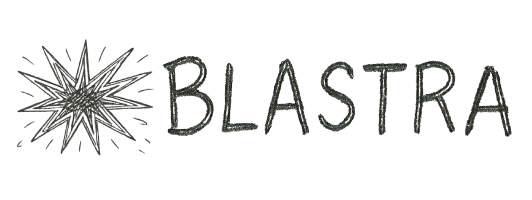While most startups treat directory listings as a simple marketing task to check off, they're missing something bigger: the compound effect of being systematically present across key platforms. Unlike paid advertising, you can't simply buy your way into AI recommendations - but you can build a foundation that makes your company the natural choice. At Blastra, we help SaaS teams operationalize this foundation by maintaining consistent, structured listings across key directories.
The AI Citation Advantage
AI systems increasingly pull recommendations from established directories when answering business software queries. This creates a powerful double benefit - directory presence helps both traditional SEO and AI recommendations. When ChatGPT suggests software solutions, it frequently references platforms like G2, Capterra, and Product Hunt. Understanding how AI discovery differs from traditional SEO is essential for modern software marketing.
This matters more in B2B than B2C because business software buyers rely heavily on structured comparison platforms. While Reddit dominates general AI citations, specialized B2B directories are the go-to sources for software recommendations.
Understanding the Directory Landscape
Not all directories serve the same strategic purpose. Understanding these distinctions is crucial for building an effective moat:
Company vs. Product Focus
Product-Focused Directories list and review individual software products:
- Examples: G2, Capterra, GetApp
- Focus: Feature comparisons, user reviews, pricing
- Users: Buyers actively comparing solutions
- Strategic Value: Direct sales leads, buyer education
Company-Focused Directories showcase businesses and startups:
- Examples: Crunchbase, AngelList, StartupNationCentral
- Focus: Company information, funding, team, vision
- Users: Investors, partners, potential employees
- Strategic Value: Credibility building, partnership opportunities
Strategy: List in both types. Product directories drive sales leads, while company directories build brand credibility and attract partnerships.
Launch vs. Regular Directories
Launch Directories are event-based platforms focused on new product announcements:
- Examples: Product Hunt, BetaList, Launching Next
- Focus: Generate buzz around launches, get early adopters
- Users: Early adopters, tech enthusiasts, media
- Strategic Value: PR amplification, community building
Regular Directories provide ongoing listing and discovery:
- Examples: G2, Capterra, SaaSHub, AI directories
- Focus: Continuous visibility, lead generation, SEO
- Users: Buyers searching for solutions, comparison shoppers
- Strategic Value: Sustained traffic, review accumulation
Strategy: Launch directories are opportunities to generate buzz - prepare extensively and treat them as marketing events. Regular directories provide lasting value through ongoing traffic and SEO benefits.
General vs. Niche
General Directories accept all vertical startups (B2B software across industries):
- Examples: SaaSHub, Capterra, G2
- Focus: Cross-industry software discovery
- Users: Buyers across all business functions
- Strategic Value: Broad reach, category establishment
Niche Directories focus on specific industries or product types:
- Examples: There's An AI For That (AI tools), Digital Project Manager (project management tools)
- Focus: Specialized audience within specific categories
- Users: Buyers looking for solutions in specific niches
- Strategic Value: High-intent leads, category leadership
Strategy: If selling to a specific niche, be listed in both. General directories have categories for each niche, so they cannot be skipped. Niche directories provide highly targeted traffic but shouldn't replace general coverage.
Global vs. Local
Global Directories serve worldwide audiences:
- Examples: Product Hunt, G2, Capterra
- Focus: International market reach
- Users: Global buyers, primarily English-speaking
- Strategic Value: Scale, international expansion
Local/Regional Directories focus on specific geographic markets:
- Examples: StartupNationCentral (Israel), La French Tech (France)
- Focus: Regional market penetration
- Users: Local businesses, region-specific buyers
- Strategic Value: Local credibility, regulatory compliance
Strategy: Software products should prioritize global directories. Local directories are worth pursuing if familiar with them and have extra time. Otherwise, rely on localization provided by the Gartner family (Capterra, GetApp, Software Advice).
The Tier System: Strategic Prioritization
Tier 1 (Domain Rating 70+): Premium directories with massive authority
- Examples: Product Hunt (DR 91), BetaList (DR 73), SaaSHub (DR 71)
- Characteristics: High traffic, strong SEO value, manual review process
- Effort Required: High (extensive descriptions tailored to their schema, multiple screenshots, multi-step approval processes with manual reviews)
- Strategic Impact: Maximum visibility and credibility boost
Tier 2 (Domain Rating 40-69): Solid mid-tier options
- Examples: StartupBase (DR 52), FutureTools (DR 60)
- Characteristics: Good traffic, moderate SEO value, mixed review processes
- Effort Required: Medium (standard application forms)
- Strategic Impact: Good visibility with specific audiences
Tier 3 (Domain Rating <40): Emerging or niche directories
- Characteristics: Lower traffic, minimal SEO value, easy submission
- Effort Required: Low (simple forms, auto-approval)
- Strategic Impact: Limited visibility, good for comprehensive coverage
Domain Rating (DR) from Ahrefs measures backlink authority (0-100). In our analysis of 200+ directories, most were Tier 3, making Tier 1 and 2 directories particularly valuable.
Building Cumulative Directory Advantage
Tier-Based Accumulation
The key is starting with top-tier directories (those with Domain Rating 70+) like Product Hunt, BetaList, and SaaSHub. These premium platforms have massive authority and engaged audiences. Only after establishing a strong presence there should you expand to mid-tier platforms.
Review Momentum
Early reviews create a network effect. When buyers see consistent positive reviews across multiple platforms, it builds tremendous trust. The trick is building systematic review collection into your customer success processes from day one. A steady stream of authentic reviews compounds over time, creating an increasingly strong moat. For detailed guidance on collecting quality reviews, see our complete G2 & Capterra requirements guide.
Cross-Platform Synergy Effects
Launch Sequence Optimization
Smart companies follow a strategic launch sequence:
- BetaList during private beta
- Foundation coverage across key directories
- Product Hunt launch as a major event
Each platform amplifies the next, creating momentum that's hard for competitors to match.
Multi-Directory Presence Benefits
Being present across directories doesn't just help with individual platform visibility. It builds overall SEO authority and creates powerful credibility signals that influence both human buyers and AI systems.
Strategic Maintenance & Future-Proofing
Directory success isn't "set it and forget it." It requires:
- Regular profile updates as your product evolves
- Active monitoring of competitor activities
- Systematic review management
- Adaptation to emerging platforms
Blastra simplifies this maintenance cycle by centralizing updates and keeping listings consistent across your entire directory portfolio.
Building Your Directory Moat
Competitive Research Framework
Before submitting anywhere, analyze where your top 3-5 competitors are listed. This reveals:
- Which directories your target audience actually uses
- Where there are visibility gaps you can fill
- Which platforms drive real traffic in your space
Resource Allocation Strategy
While automation tools can help with basic submissions, premium directories require careful manual attention. Budget time and resources for:
- Custom descriptions for each platform
- High-quality visuals that meet platform specs
- Relationship building with directory communities
- Ongoing review collection and management
The Compounding Advantage
Directory strategy creates compound benefits that grow over time:
- Each positive review strengthens your position
- SEO authority builds gradually but permanently
- AI systems increasingly reference your presence
- Buyer trust deepens with consistent social proof
- Competitors face an ever-higher barrier to catch up
The best time to start building your directory moat was last year. The second best time is now.
Key Actions:
- Map your top-tier directory targets
- Build a systematic review collection process
- Create a regular maintenance calendar
- Monitor emerging directories in your space
- Track and close gaps versus competitors
- Maintain structured, consistent directory listings with Blastra's centralized workflow
Remember: Directory strategy isn't about quick wins. It's about building an enduring advantage that gets stronger over time.
FAQ: Answers to Common Questions
How long does it take to see results from directory listings?
Directory strategy is a long-term play. Initial SEO benefits from backlinks can appear within 2-3 months. Review accumulation and AI citation benefits compound over 6-12 months. The competitive moat becomes significant after consistent effort over 1-2 years as competitors face increasingly higher barriers to catch up.
Should I pay for premium directory listings?
Start with free listings on top-tier directories before investing in paid placements. Premium features can be valuable once you've established a presence and want to optimize further—features like analytics, competitor tracking, and enhanced profiles. But free listings on high-authority directories provide substantial value on their own.
How many directories should I list my product on?
Focus on quality over quantity. Prioritize Tier 1 directories (DR 70+) first, then expand to relevant Tier 2 platforms. For most B2B SaaS products, being listed on 20-30 well-chosen directories across major, niche, and regional categories provides comprehensive coverage without spreading resources too thin.
What's the difference between product and company directories?
Product directories (G2, Capterra) list software solutions and focus on features, pricing, and user reviews—they drive sales leads. Company directories (Crunchbase, AngelList) showcase your business, funding, and team—they build credibility and attract partnerships. A comprehensive strategy includes both types.
How do I maintain directory listings over time?
Create a quarterly review calendar. Update product information after feature releases, pricing changes, or new integrations. Respond to reviews within a week. Monitor competitor activity monthly. Assign ownership to ensure listings don't become stale—decay erodes the advantage you've built.
You Might Also Like
- Why SaaS Founders Should Skip Clutch (And Focus on Real Product Directories Instead) - Understanding the difference between service marketplaces and product directories
- How to Win Customers by Learning from Your G2 Competitor Reviews - Turn competitor reviews into your growth advantage
- How to Get Your Software Ranked on G2 (and Why Invest in It at All) - Master G2's scoring algorithm and earn those coveted badges
Use Blastra to submit your business to relevant software directories and manage your listings.

